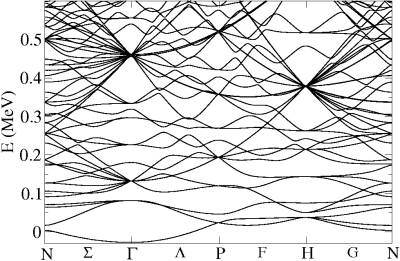Nuclear band theory of neutron star crust
The inner region of the crust of a neutron star is
formed of a crystal lattice of nuclear clusters immersed in a neutron sea. This
nuclear environment is closely analogous to more familiar periodic systems in
condensed matter physics, such as electrons in ordinary metals, cold atomic gases in optical lattices, photonic or phononic crystals. All these periodic
systems are described by the band theory of solids developed by Felix
Bloch.
During my PhD
thesis, I adapted for the first time this theory to neutron-star crusts. The
band theory allows for a consistent treatment of both the free neutrons and the
nucleons bound inside nuclear clusters. The figure below shows an example of a
numerical calculation of the neutron band structure (left) and the
corresponding Fermi surface (right), at a density of 700 billion grams per
cubic centimeters. The crust is composed of a body centered cubic lattice of
zirconium like clusters (40 protons per lattice site). The different colors are
associated with different branches of the Fermi surface.


see N. Chamel, Nucl. Phys. A747(2005), 109. PDF
The band theory is particularly well suited for studying the dynamics of the
neutron superfluid, especially the reduction of the neutron superfluid density due
Bragg scattering.
see N. Chamel, Phys. Rev. C 85, 035801 (2012). PDF
Back to the main
page

